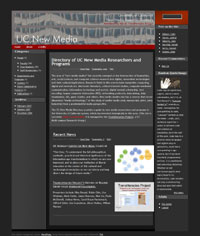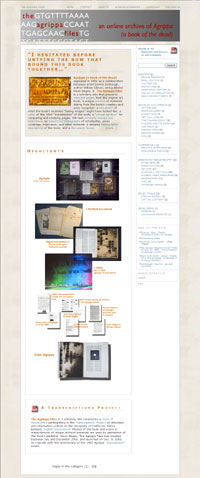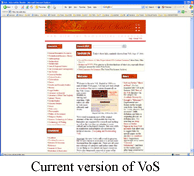| 2007 |
UC New Media DirectoryCategories Digital Humanities & New Media Projects , Other Digital Humanities & New Media Projects Digital Humanities & New Media Projects , Other Digital Humanities & New Media Projects
|
 URL: http://ucnewmedia.english.ucsb.edu URL: http://ucnewmedia.english.ucsb.eduRole: Founder. The area of “new media studies” has recently emerged at the intersection of humanities, arts, social science, and computer science research into digital, networked technologies and their cultural implications. Research fields in this area include humanities computing, digital and network art, electronic literature, critical internet studies, computer-mediated communication, information technology and society, digital textual scholarship, text encoding, human computer interaction (HCI), networking protocols, data mining, data visualization, GIS, game studies, and others. New media studies also has a reverse time-arrow dimension: “media archaeology,” or the study of earlier media (oral, manuscript, print, early industrial) from a postindustrial media perspective. The UC New Media Directory provides a guide to new media researchers and programs in the University of California system, which has invested strategically in this area. (This site is currently under construction. It is managed by the Transliteracies Project, a UC Multi-campus Research Group.) |



